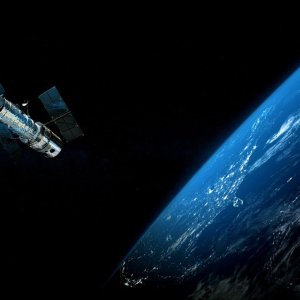
Airbus Launches Solution to Predict Weather, Help Agriculture
 By Sofía Hanna | Journalist and Industry Analyst -
Mon, 08/30/2021 - 15:00
By Sofía Hanna | Journalist and Industry Analyst -
Mon, 08/30/2021 - 15:00
Weather forecasting takes a new meaning thanks to Airbus’s new project: the first-ever satellite to use the Doppler effect to determine wind speed. This technology is now used in daily weather forecasting and global wind profiling.
The Aeolus initiative, named after the Greek god of winds, was born from an attempt to develop a highly complex Light Detection and Ranging (LIDAR) instrument for a European Space Agency (ESA) mission. It was first launched on Aug. 22, 2018, to accurately wind-map at all latitudes with a 250m resolution. Since then, Aeolus has consistently delivered high-quality data and has gone above and beyond its original mission. Accurate wind forecasts are crucial for activities such as farming, fishing, construction and air transport.
Aeolus data provided missing wind measurements, which used to be taken by airplanes before COVID-19. But its data has been so valuable that it has now been adopted for daily weather forecasting. “That Aeolus data is now being used as part of the operational weather forecasting flow demonstrates its quality and reliability. Built as a one-off research mission, Aeolus truly exceeds all expectations, a testament to our engineers’ skill and determination in developing this new technology. In the official report, its success also paves the way for a possible future fleet of Doppler wind Lidar satellites in space,” said Philippe Pham, Airbus’ Head of Earth Observation & Science.
The data obtained by Aeolus has been vital for meteorologists and climatologists to improve weather forecasts and better understand the dynamics of Earth’s atmosphere and climate variations. This tool becomes essential at times when countries, including Mexico, steep up their fight against climate change, which has ravaged agricultural sectors that depend on the climate to have better production. Previously MBN reported that Mexico’s northern states are grappling through one of the most intense and widespread droughts of the last three decades, which has come to devastate water-intensive industries like agriculture and livestock. Situations such as these have brought together countries together to find solutions. Mexico, the US and Canada, for example, have agreed to collaborate and share information in regard to technology generation models for climate change.
Although technology such as Aeolus can help to better predict environmental challenges, if continuous measures are not taken to limit the effects of climate change, they will only worsen. Manuel Pulgar-Vidal, WWF Global Climate and Energy Leader, explains that leaders must act with “certainty of the scale of the climate crisis and the role of humanity in driving extreme weather events.”
















